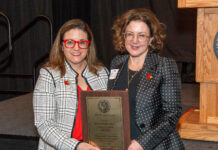LOUISVILLE, Ky. — Neuroscience researchers at the University of Louisville will be the only team collaborating with an international group of scientists who last week announced they had enabled paralyzed rats to walk while supporting their own weight.
Dr. Susan Harkema, UofL’s Owsley Brown Frazier Chair in Neurological Rehabilitation, rehabilitation director at the university’s Kentucky Spinal Cord Injury Research Center (KSCIRC) and the director of research at Frazier Rehab Institute, is evaluating how to translate into humans the success accomplished in the animals.
“We have been collaborating with this particular group of researchers for a number of years,” Harkema said. “The results they have shown are very exciting and we look forward to determining how to take their animal findings and move it into applications for humans.”
The research team at UCLA found that a combination of drugs, electrical stimulation and regular exercise was enough to allow the rats to walk. One of the key things demonstrated is that regeneration of severed nerve fibers is not required for the animals to learn to walk again.
“Spine cells in mammals generate a current that helps make muscles and parts of the body move. If we can find ways to harness that current and stimulate appropriate areas with electrical stimulation to enhance that current, we may be able to help people who have complete spinal cord injuries stand and walk on their own,” Harkema said.
Statistics from the University of Alabama National Spinal Cord Injury Statistical Center show that approximately 250,000 Americans are spinal cord injured. Fifty two percent of spinal cord injured individuals are considered paraplegic and 47 percent quadriplegic. Approximately 11,000 new injuries occur each year. Fifty-six percent of injuries occur between the ages of 16 and 30. The average age of a spinal cord injured person is 31.


























